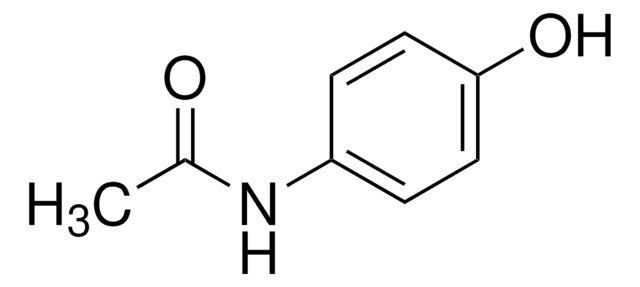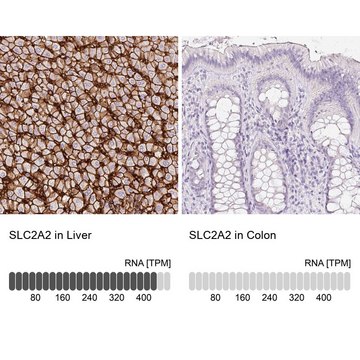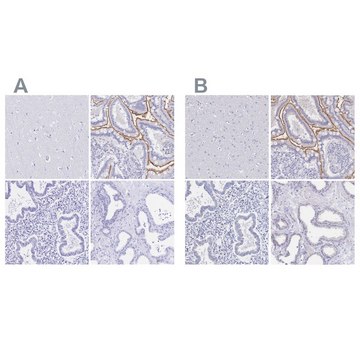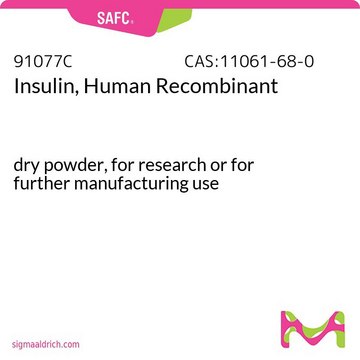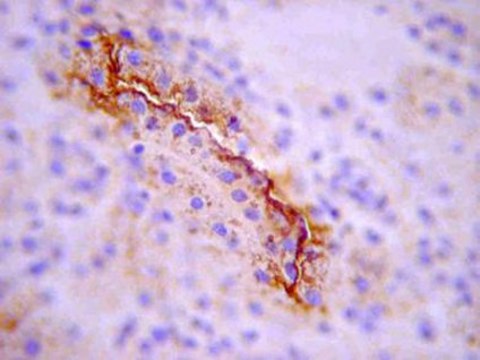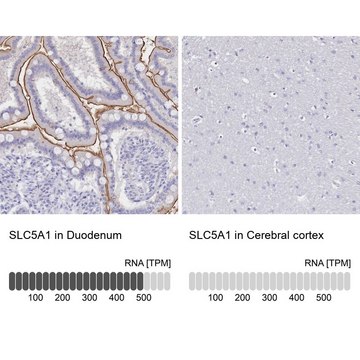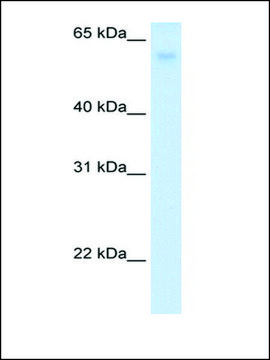General description
Solute carrier family 2, facilitated glucose transporter member 2 (UniProt P14246; also known as Glucose transporter type 2, liver, GLUT-2) is encoded by the Slc2a2 (also known as Glut-2, Glut2) gene (Gene ID 20526) in murine species. GLUTs (Glucose transporters) are a family of integral membrane glycoproteins that facilitative glucose uptake by cells. Molecular cloning of glucose transporters have identified a family of closely related genes that encode at least 7 proteins exhibiting high degree of homology (45% to 65%). GLUT2 is a facilitative glucose transporter that mediates the bidirectional transfer of glucose across the hepatocyte membrane. It is present at high levels in the plasma membrane of pancreatic beta cells where it initiates the first step in glucose-stimulated insulin secretion. Due to its low affinity and high capacity, GLUT2 transports dietary sugars, glucose, fructose and galactose in a large range of physiological concentrations, displaying large bidirectional fluxes in and out the cells. It also participates in the transport of glucose in small intestine and kidney along with the Na+/glucose cotransporter. Hepatic GLUT2 expression is upregulated in a dose-dependent manner according to glucose concentration in primary hepatocytes and hepatocyte cell lines. Also, hepatic GLUT2 expression is reduced during starvation and returns to normal levels after refeeding. In diabetic animals, hepatic GLUT2 expression is increased, but is corrected to normal levels when hyperglycemic conditions are corrected by exogenous insulin.
Ref.: Burkhardt, BR., et al. (2005). FEBS Lett. 579, 5759 5764.
Specificity
This polyclonal antibody targets a region within the first extracellular loop of human, mouse, and rat GLUT-2.
Immunogen
Epitope: domain of:
KLH-conjugated linear peptide corresponding to a 16-a.a. sequence within the first extracellular loop of mouse GLUT-2.
Application
Detect GLUT-2 using this rabbit polyclonal Anti-GLUT-2 purified Antibody, Cat. No. 07-1402-I, validated for use in Western Blotting.
Research Category
Signaling
Western Blotting Analysis: 1 µg/mL from a representative lot detected GLUT-2 in 10 µg of human (A431, HEK293, HeLa, HepG2, HUVEC, Jurkat, PC3), mouse (C2C12, NIH/3T3, Raw 264.7), rat (L6, PC12) cell lysates and mouse brain tissue homogenate.
Quality
Evaluated by Western Blotting in HEK293 cell lysate.
Western Blotting Analysis: 1 µg/mL of this antibody detected GLUT-2 in 10 µg of HEK293 cell lysate.
Target description
~50 kDa oberved. 57.49/57.11/57.09 kDa (human/mouse/rat) calculated. Uncharacterized bands may be observed in some lysate(s).
Physical form
Affinity purified.
Purified rabbit polyclonal antibody in buffer containing 0.1 M Tris-Glycine (pH 7.4), 150 mM NaCl with 0.05% sodium azide.
Storage and Stability
Stable for 1 year at 2-8°C from date of receipt.
Other Notes
Concentration: Please refer to lot specific datasheet.
Disclaimer
Unless otherwise stated in our catalog or other company documentation accompanying the product(s), our products are intended for research use only and are not to be used for any other purpose, which includes but is not limited to, unauthorized commercial uses, in vitro diagnostic uses, ex vivo or in vivo therapeutic uses or any type of consumption or application to humans or animals.
